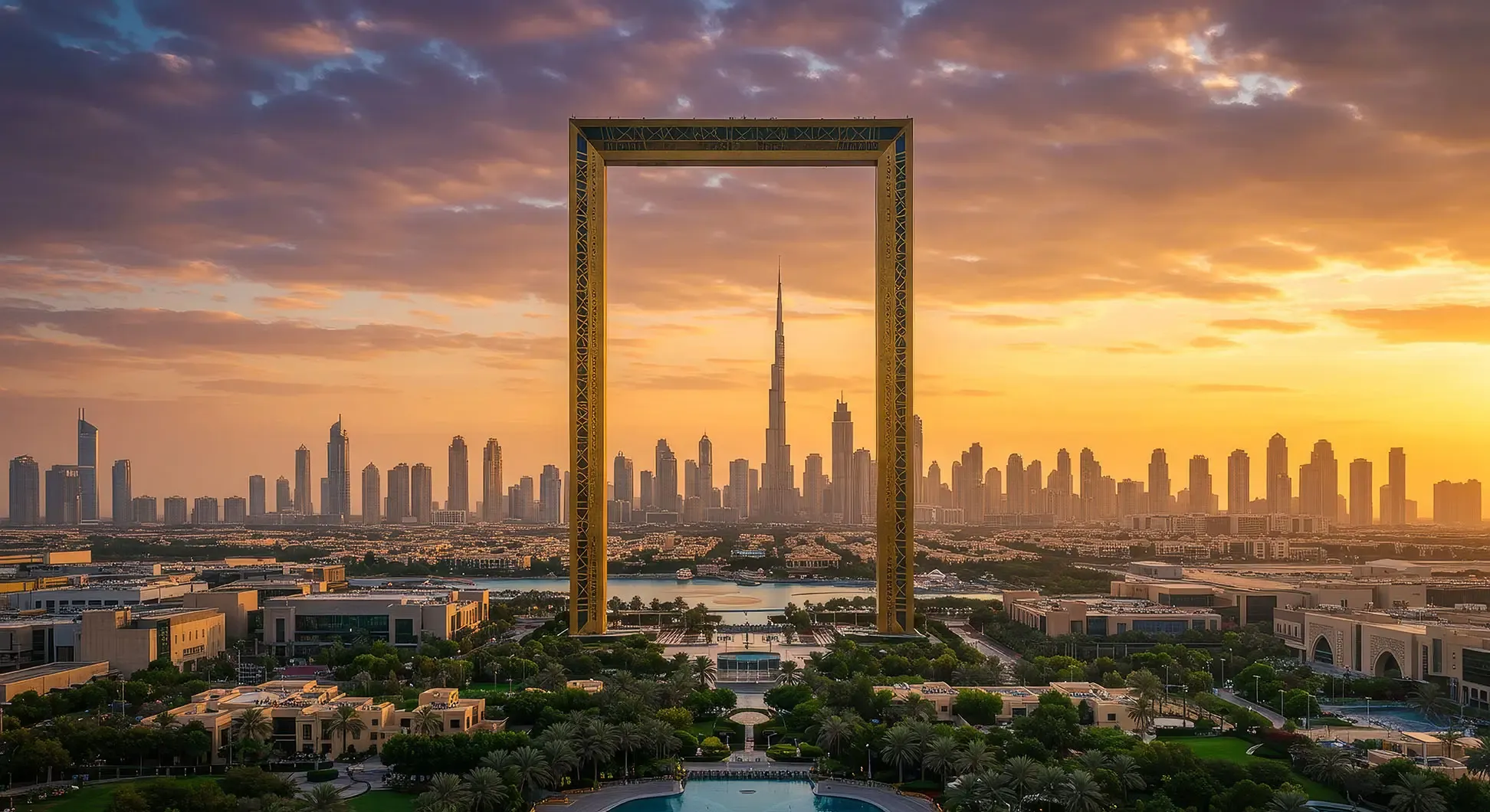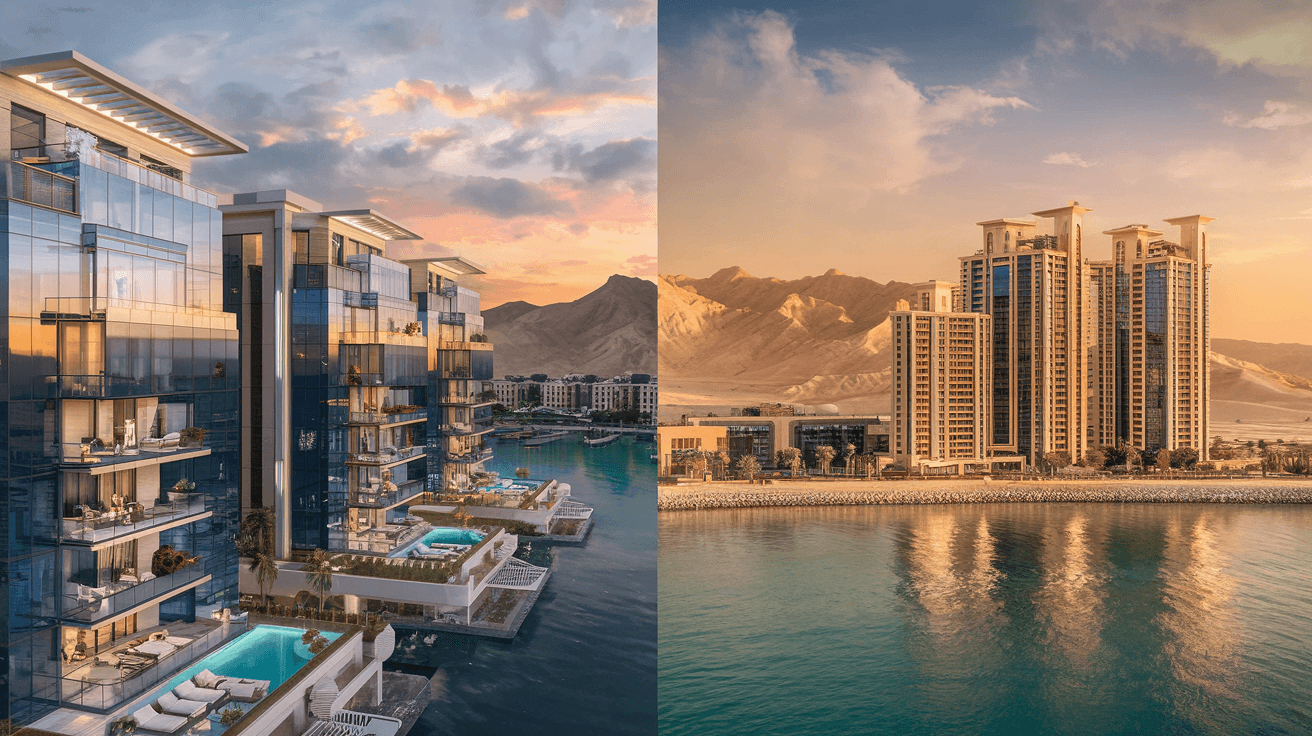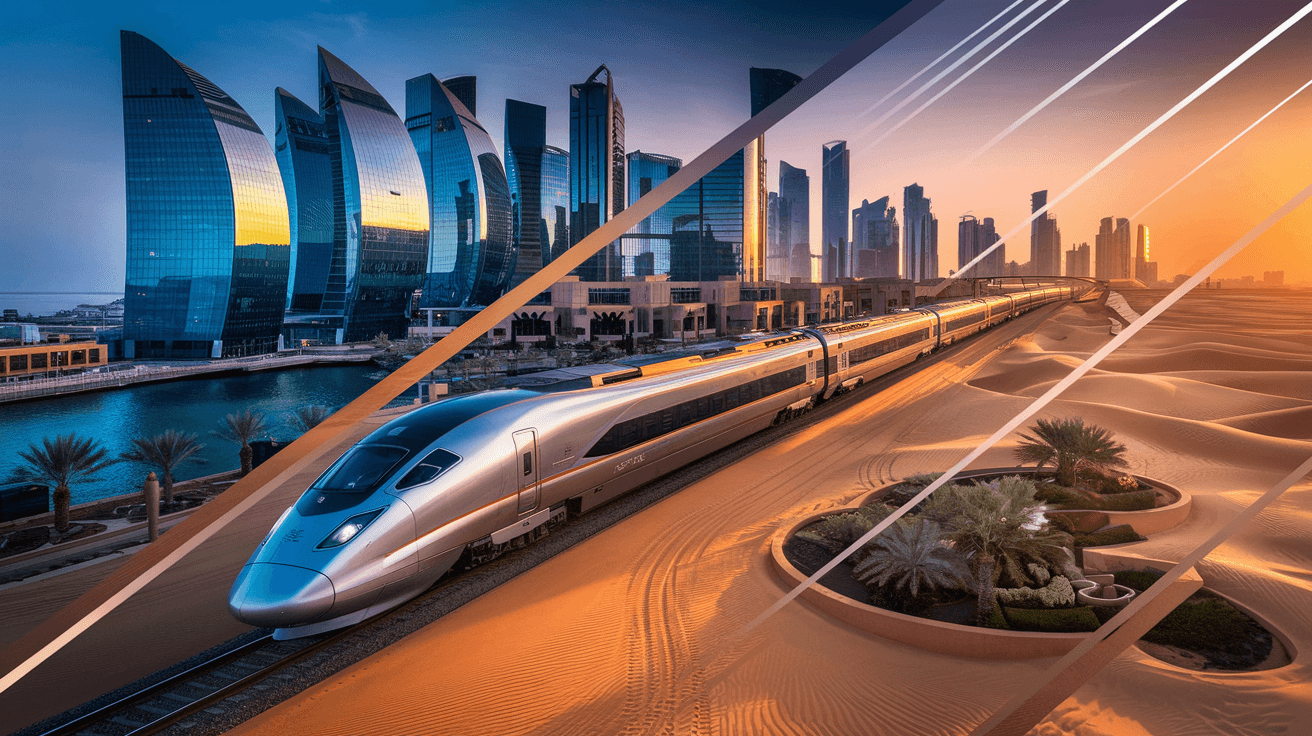Etihad Rail Impact: How 45-Minute Commutes Are Transforming RAK Property Investments
Discover how Etihad Rail's revolutionary connectivity is redefining RAK's property landscape, creating unprecedented investment opportunities with projected price appreciation and 45-minute commutes t
Table Of Contents
- The Etihad Rail Revolution: Connecting the Emirates
- The 45-Minute Game-Changer: RAK to Dubai
- Market Transformation: RAK Property Price Projections
- Investment Implications: The Early-Mover Advantage
- Luxury Living at Accessible Prices: RAK's Unique Proposition
- Developer Response: New Projects Capitalising on Rail Connectivity
- Expert Forecast: RAK's Five-Year Growth Trajectory
- Strategic Investment Considerations
- Conclusion: The Window of Opportunity
Etihad Rail Impact: How 45-Minute Commutes Are Transforming RAK Property Investments
The UAE's property landscape is on the cusp of a monumental shift. As Etihad Rail's national network takes shape, one emirate stands poised for extraordinary transformation: Ras Al Khaimah. The prospect of 45-minute commutes between RAK and Dubai isn't merely a transport evolution—it's catalysing a fundamental revaluation of property markets that savvy investors are already positioning to leverage.
This seismic infrastructure development promises to collapse geographical barriers that have historically kept RAK's exceptional lifestyle offerings at a price discount compared to Dubai and Abu Dhabi. As connectivity improves dramatically, the emirate's pristine beaches, mountainous landscapes, and significantly more affordable luxury properties are suddenly within convenient reach for professionals working in the UAE's commercial centres.
In this comprehensive analysis, we explore how Etihad Rail is set to redefine RAK's property market dynamics, examine price growth projections across key developments, and identify the strategic investment opportunities emerging in this rapidly evolving landscape.
The Etihad Rail Revolution: Connecting the Emirates
Etihad Rail represents the UAE's most ambitious infrastructure project, designed to seamlessly connect all seven emirates through a modern, efficient rail network. The 1,200-kilometre national railway will transform the country's logistics capabilities and, crucially, revolutionise passenger transport. The passenger service will operate at speeds up to 200 km/h, enabling unprecedented connectivity between the nation's urban centres.
The network's second phase, which includes the critical connection between Ras Al Khaimah and Dubai, is progressing rapidly. When complete, this route will fundamentally alter perceptions of distance and accessibility between these emirates. For context, the current road journey between central RAK and Dubai typically requires 75-90 minutes, depending on traffic conditions—a significant deterrent for daily commuters and weekend visitors alike.
Etihad Rail's passenger service will reduce this journey to approximately 45 minutes, rendering RAK effectively as accessible as distant parts of Dubai itself. This compression of travel time has profound implications for property valuations, as market evidence consistently demonstrates that property prices correlate strongly with commute times to major employment hubs.
The 45-Minute Game-Changer: RAK to Dubai
The significance of a 45-minute commute cannot be overstated in property market terms. International real estate data consistently shows that the 45-minute threshold represents a critical psychological barrier for commuters. Journey times below this threshold are generally considered reasonable for daily travel, while longer commutes typically suppress property demand and, consequently, prices.
By bringing RAK within this golden commuting zone, Etihad Rail effectively expands Dubai's viable living perimeter to include RAK's premium developments. The implications are substantial when one considers the price differentials currently existing between comparable properties in these markets.
Presently, luxury waterfront apartments in RAK developments such as Al Marjan Island command prices approximately 40-50% lower than similar offerings in Dubai Marina or Palm Jumeirah. This discount persists despite RAK properties often offering superior specifications, larger floor plans, and more exclusive amenities—a disparity primarily attributed to location and accessibility constraints that Etihad Rail will largely eliminate.
Market Transformation: RAK Property Price Projections
Emerging data suggests RAK's property market is already responding to the anticipated rail connectivity. Over the past 18 months, premium developments in RAK have registered price appreciation of 15-22%, significantly outpacing historical growth rates. This acceleration appears directly correlated with milestone announcements regarding Etihad Rail's progress.
Looking forward, several credible economic forecasts project that RAK's luxury property segment could experience cumulative price growth of 35-45% by the time regular passenger services commence operations, with further appreciation expected as commuter patterns become established.
This projection is supported by historical precedents from similar infrastructure developments globally. When analysing comparable rail projects in Europe and Asia, property values in newly connected satellite communities typically converge to within 75-85% of central district prices over a 5-7 year period following service commencement.
Applying this model to RAK suggests significant upside potential remains, even after accounting for recent appreciation. Current pricing in prime RAK developments averages approximately AED 1,100-1,400 per square foot, compared to AED 2,200-3,500 for comparable Dubai properties—indicating substantial room for further convergence.
Investment Implications: The Early-Mover Advantage
The current market conditions present a compelling window of opportunity for strategic investors. While some price movement has occurred in anticipation of improved connectivity, the full impact of Etihad Rail remains largely unpriced into RAK's property market. Several factors contribute to this inefficiency:
- Limited public awareness of the rail project's timeline and specific implications for commuting practicality
- Institutional investors' traditional focus on Dubai and Abu Dhabi markets
- The gradual nature of infrastructure-driven price adjustments, which typically accelerate as project completion approaches
These market conditions favour informed investors who can secure positions in premium developments before widespread recognition of RAK's transformation drives more competitive pricing. Exclusive RAK Off-Plan Projects currently represent some of the most compelling risk-adjusted return opportunities in the UAE property market, with pre-launch pricing offering particular value.
Off-plan investments in masterplanned communities adjacent to planned rail stations present exceptional potential, combining attractive entry points with maximum exposure to connectivity-driven appreciation. Developments such as Emaar's Eagle Hills RAK, Marjan's upcoming luxury residences, and the new RAK Holding projects are strategically positioned to benefit from Etihad Rail's transformative impact.
Luxury Living at Accessible Prices: RAK's Unique Proposition
Beyond pure investment considerations, RAK offers a compelling lifestyle proposition that will gain substantial visibility as connectivity improves. The emirate combines natural beauty with world-class amenities at value points unmatched elsewhere in the UAE.
RAK's stunning coastline features over 64 kilometres of pristine beaches, complemented by the dramatic backdrop of the Hajar Mountains. This natural setting hosts an expanding collection of five-star hospitality brands, including Waldorf Astoria, InterContinental, and Anantara, establishing a luxury ecosystem that enhances residential property values.
The emirate's generous master planning allows for significantly lower density development compared to Dubai, translating to larger living spaces, more extensive amenities, and a more exclusive residential experience at comparable price points. For instance:
- Two-bedroom luxury apartments in RAK typically offer 1,400-1,800 square feet of living space, compared to 1,000-1,300 square feet for similarly priced Dubai properties
- Premium RAK developments feature amenities such as private beaches, championship golf courses, and extensive nature reserves—offerings that would command significant premiums in Dubai
- Operating costs, including service charges, tend to be 25-35% lower in RAK developments, enhancing long-term value retention
As Etihad Rail eliminates the accessibility compromise previously required to benefit from these advantages, RAK's value proposition becomes exceptionally compelling for both end-users and investors.
Developer Response: New Projects Capitalising on Rail Connectivity
Leading developers are already positioning their portfolios to capitalise on RAK's emerging connectivity advantage. The past 18 months have witnessed unprecedented levels of new project announcements from premier developers who previously focused exclusively on Dubai and Abu Dhabi.
Emaar Properties, the developer behind iconic Dubai projects like Burj Khalifa and Dubai Mall, has made a significant entry into RAK with multiple developments planned around future rail connectivity. Similarly, Aldar Properties, Abu Dhabi's leading developer, has acquired substantial land banks in RAK for future development.
This influx of tier-one developers brings sophisticated master planning, premium build quality, and robust marketing capabilities to RAK—factors that historically contribute to price premiums. Their entry also signals institutional confidence in RAK's growth trajectory, providing further validation for individual investors considering the market.
Notably, new master developments are being designed with specific consideration for rail connectivity, with integrated transport hubs and commercial districts planned around station locations. These transit-oriented developments typically command 15-25% premiums over comparable properties without such connectivity, representing another layer of potential appreciation for strategically located investments.
Expert Forecast: RAK's Five-Year Growth Trajectory
Analysing the confluence of factors influencing RAK's property market—enhanced connectivity, increasing developer quality, lifestyle advantages, and relative value—enables the construction of a credible five-year forecast for the emirate's premium property segment.
The most probable scenario indicates a non-linear appreciation curve, with growth rates accelerating as key rail milestones are achieved:
- Phase 1 (Current-2025): 15-20% cumulative appreciation as infrastructure progress continues and early adopter developers establish premium benchmarks
- Phase 2 (2025-2027): 25-30% cumulative appreciation as rail testing commences and station infrastructure becomes visible
- Phase 3 (2027-2029): 20-25% cumulative appreciation as regular services begin operation and commuter patterns become established
This projected cumulative appreciation of 60-75% over five to seven years represents exceptional potential in comparison to established markets. For context, Dubai's premium segment is projected to appreciate by 30-40% over the same period, according to consensus forecasts from leading property consultancies.
Importantly, these projections represent average expectations across RAK's premium segment. Specific developments with strategic locations, superior amenities, and quality construction could significantly outperform these benchmarks, particularly those with direct access to planned rail infrastructure.
Strategic Investment Considerations
Investing in RAK Property requires careful consideration of several factors to maximise returns and mitigate risks. Investors should prioritise developments that optimise exposure to rail-driven appreciation while maintaining strong fundamentals independent of connectivity improvements:
Location Optimisation: Properties within 10-15 minutes of planned rail stations will likely experience the most significant appreciation, while still benefiting from RAK's peaceful setting. Developments along the eastern coastal corridor and southern growth zones are particularly well-positioned.
Developer Credentials: As the market attracts new entrants, developer track record becomes increasingly important. Established UAE developers with proven delivery capabilities represent lower-risk opportunities, particularly for off-plan investments.
Payment Structure Leverage: Many RAK developments offer attractive payment plans with substantial portions due after completion. These structures can be leveraged to maximise capital efficiency and potentially capture appreciation before full payment.
Amenity Differentiation: Properties with distinctive amenities—particularly those addressing shortages in Dubai's market such as expansive outdoor spaces, nature integration, and authentic waterfront living—will likely command increasing premiums as connectivity improves.
Exit Timing Optimisation: While long-term holdings will benefit from RAK's continued evolution, timing exits to coincide with key rail milestones could optimise returns for investors seeking defined investment horizons.
Implementing these strategic considerations requires detailed market knowledge and access to off-market opportunities that emerge as developers respond to evolving connectivity. Working with specialist advisors who maintain deep relationships across RAK's development landscape can provide significant advantages in securing optimal investment positions.
Conclusion: The Window of Opportunity
The transformation of RAK's property market through enhanced rail connectivity represents a rare alignment of market inefficiency and inevitable correction. While Dubai and Abu Dhabi's mature markets offer stability, they lack the structural growth catalysts present in RAK's evolving landscape.
The fundamental economics are compelling: as Etihad Rail collapses travel times between RAK and Dubai to approximately 45 minutes, the substantial price differential between these markets becomes increasingly unsustainable. The question is not whether price convergence will occur, but rather how quickly and to what degree.
Current market conditions present a strategic window for positioning ahead of this convergence. Despite recent appreciation, RAK properties remain 40-50% below comparable Dubai offerings, while the rail infrastructure that will fundamentally alter this equation progresses steadily. This disconnect between current pricing and future value represents the essence of asymmetric investment opportunity.
For investors seeking exceptional capital growth potential in the UAE's property market, RAK's emerging story warrants serious consideration. The combination of infrastructure-driven appreciation, lifestyle quality, and relative value creates a compelling case for strategic allocation to this rapidly evolving market.
Ready to explore premium investment opportunities in RAK's transforming property market? Contact Azimira's specialist advisors for exclusive access to off-plan projects strategically positioned to benefit from Etihad Rail connectivity. Schedule a consultation today to discuss your investment objectives and discover tailored opportunities with exceptional growth potential.
Related articles
UAE Golden Visa: the clear path for UK non‑doms via RAK property
Reassess your residency with confidence. A RAK property from about £400k can unlock a 10‑year UAE Golden Visa, family residency, strong lifestyle benefits and compelling investment potential.

RAK Rental Yield Report: Comparing Short-Stay and Long-Let Investment Strategies
Comprehensive analysis of Ras Al Khaimah's rental yield performance comparing short-stay and long-term letting strategies with exclusive market insights for property investors.

RAK real estate for SMSF: unlock your golden years
Australian trustees are looking offshore. Discover why RAK real estate for SMSF can offer growth, diversification and a premium lifestyle, plus how to structure it compliantly.

